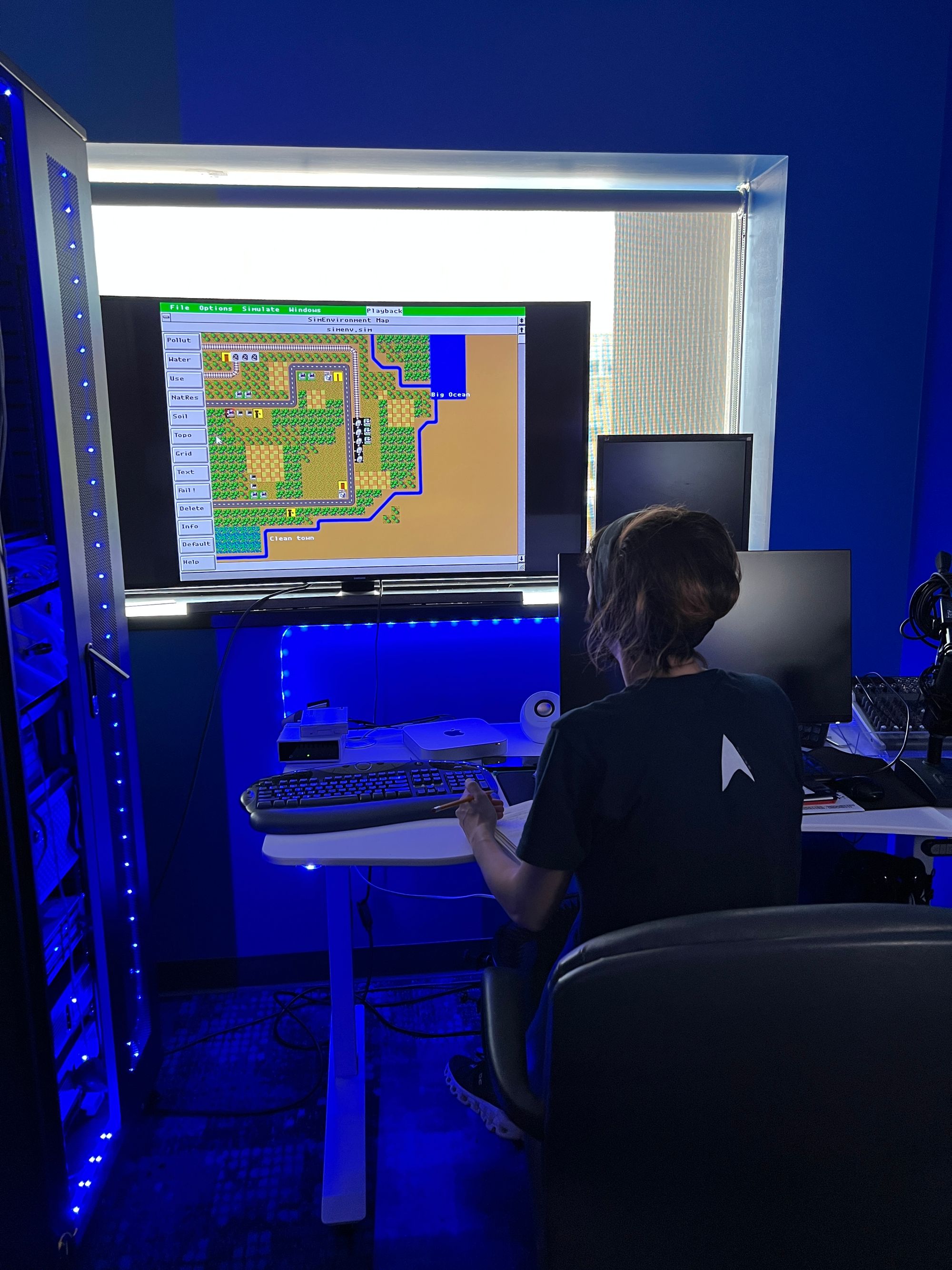An inside look at SimEnvironment, Maxis' long-lost toxic waste simulator
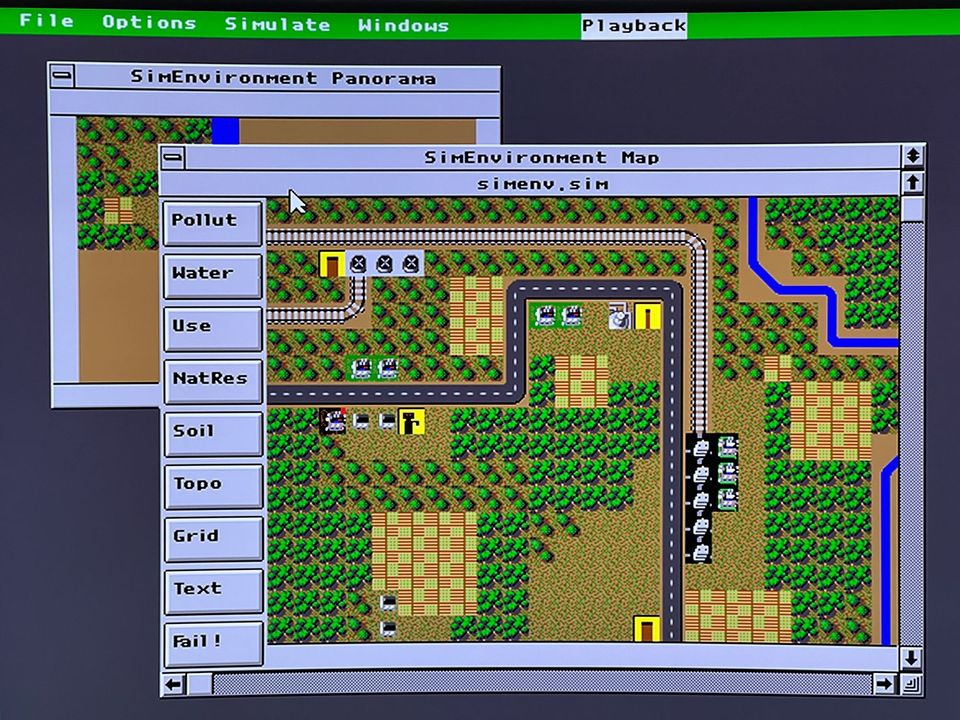
In 1992, computer game company Maxis spun off a business arm that would attempt to do for employees at oil companies and health insurance firms what SimCity had done for a generation of kids: Show them how complex systems function at a high level through pixelated, game-like simulations.
The small team behind Maxis Business Simulations generated numerous ideas but few actual games, leaving a breadcrumb trail of unfinished project titles scattered across contemporaneous news articles. But in recent years, a small community of Maxis fans and historians have helped bring these forgotten Sims into the limelight. In 2020, after game historian Phil Salvador published a thoroughly researched article about Maxis Business Simulations on his website The Obscuritory, a reader discovered and uploaded a copy of the division's first project, the oil refinery simulator SimRefinery, to the Internet Archive. Several months later, retired Chevron engineer Terrell Touchstone, who worked on SimRefinery, donated a second copy of the game to the Strong National Museum of Play in Rochester, New York. He also donated a floppy disk containing something even more obscure: a copy of the division's second title, the pollution simulator SimEnvironment.
Touchstone's copy of SimEnvironment, re-discovered while SimRefinery was generating buzz in the early days of the pandemic, is the only one known to exist. A lifelong Maxis fan and environmental journalist, when I learned it was at a museum I was insatiably curious. And so, in May of 2022, I drove up to Rochester to check out the game for myself. I then spent months tracking down former Maxis employees, chasing dubious leads with government agencies, and trying to piece together the story of this truly bizarre blip in Maxis' history.
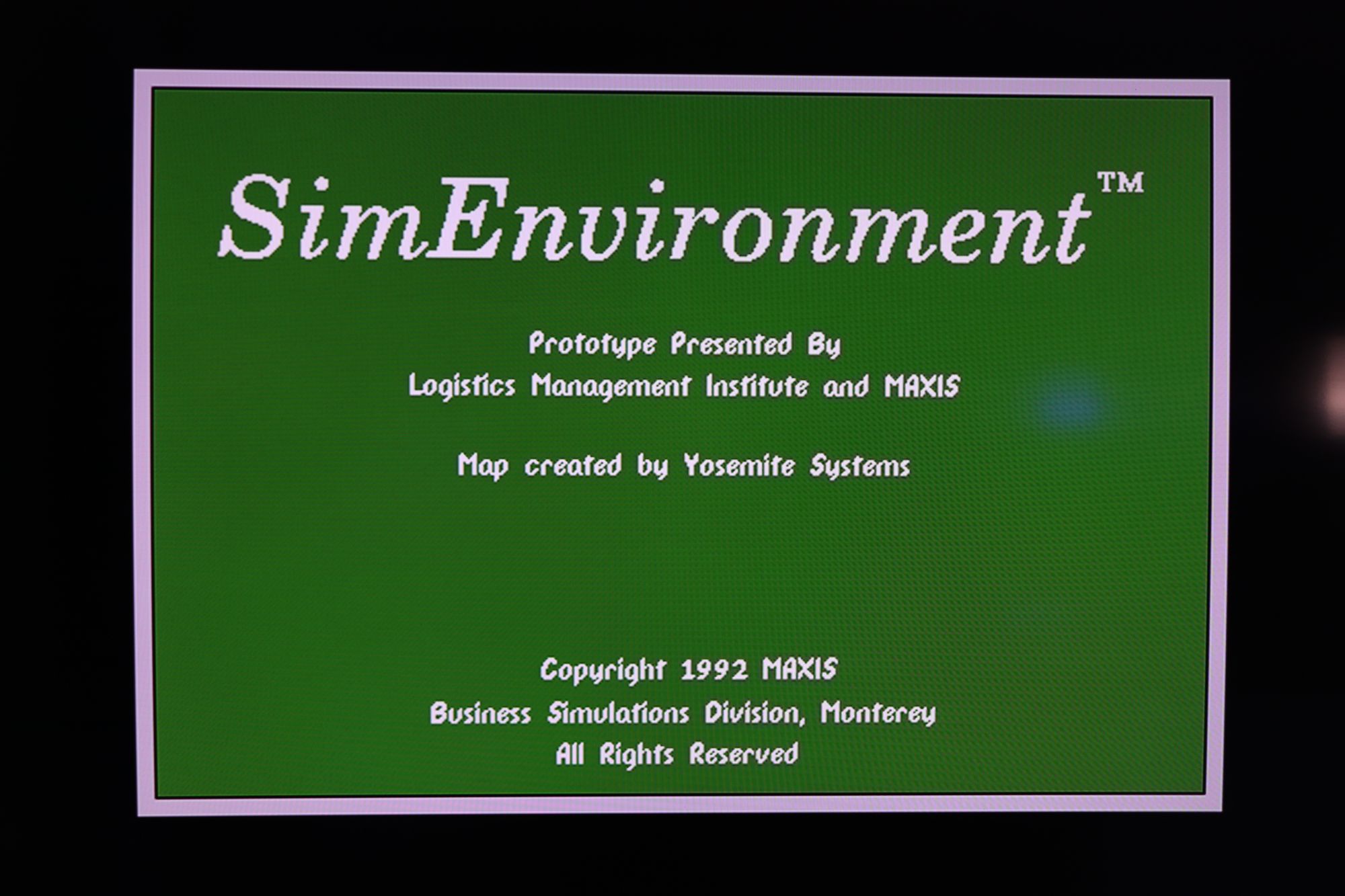
My investigation led to more questions than answers. The copy of SimEnvironment housed at the Strong Museum turned out to be an early prototype consisting of a tutorial, a world map that can be altered SimCity-style by adding roads, rivers, and polluting industrial sites, layers depicting soil conditions and topography, and a bunch of nonfunctional menu options. It's unclear if a more complete version of the game was ever built. Nobody I contacted for this article had more than a fleeting memory of the project or knew what became of it.
Bruce Skidmore, a co-founder of Maxis Business Simulations, recalled working on SimEnvironment around the same time as SimRefinery. But "I have no memory of it actually being completed," Skidmore told me. "And I couldn't tell you why."
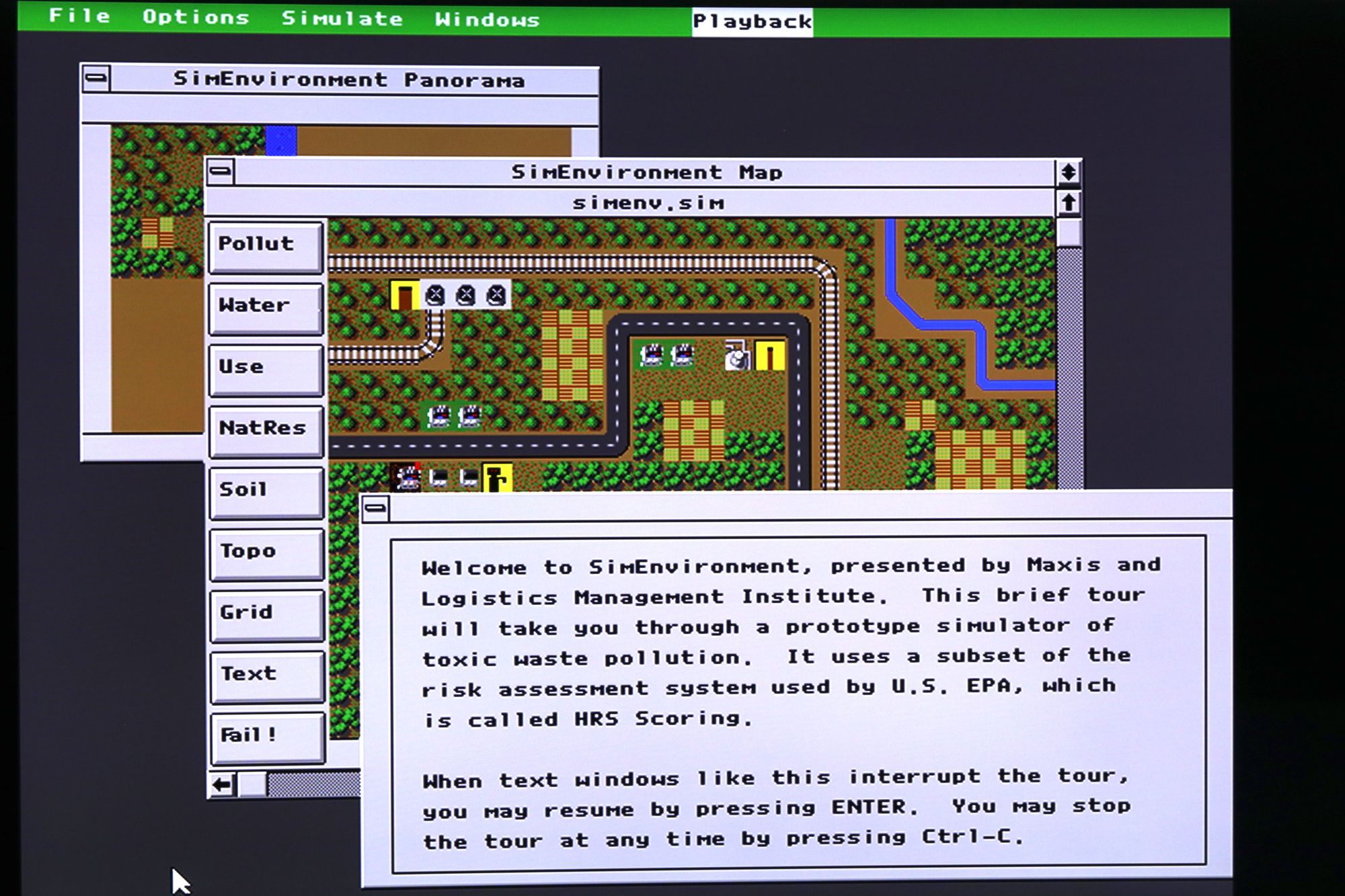
Here is what I did learn about SimEnvironment.
According to the title and welcome screen, SimEnvironment was a collaboration between Maxis Business Simulations and the Logistics Management Institute, or LMI, a consulting firm that works with government agencies. The idea for SimEnvironment may have arisen as a result of consulting work LMI was doing for the Environmental Protection Agency, or EPA, which oversees remediation of the polluted Superfund sites that the simulation relates to (more on those in a minute). But it is also possible that SimEnvironment traces its genesis back to the US Army Corps of Engineers, which in 1991 contracted LMI to conduct modeling work related to determining appropriate staffing levels at Superfund sites, according to a report an LMI archivist shared with me.
LMI conducted an internal search of company records but was unable to locate any information corroborating the firm's involvement with SimEnvironment.
The EPA told The Science of Fiction that the agency "had no direct involvement" in SimEnvironment's development, and a Freedom of Information Act request filed with the agency turned up no documents. As of publication, the US Army Corps of Engineers has not responded to similar requests for comment and documents.
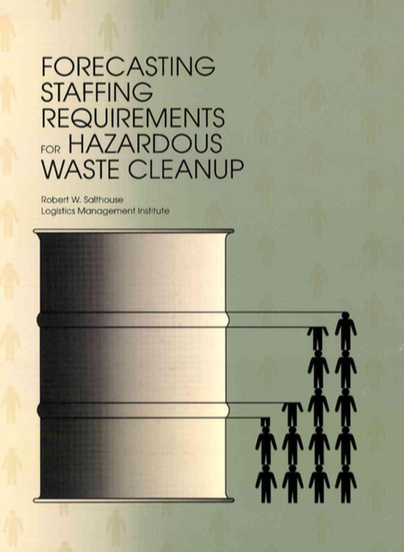
While its history is shrouded in mystery, the intent of SimEnvironment is clear: to simulate pollution. As a welcome screen on the copy at the Strong Museum explains, the game "uses a subset of the risk assessment system" developed by the EPA to assess the health and environmental risks of toxic waste sites. That system, the so-called "Hazard Ranking System," or HRS, assigns sites a score out of 100 indicating how much of a threat they pose to groundwater, surface waters, soil, and the atmosphere.
"The HRS is the principal mechanism EPA uses to place hazardous waste sites on the National Priorities List," the EPA told me. "The vast majority of the over 1700 sites that have been placed on the NPL... were added based on their HRS scores."
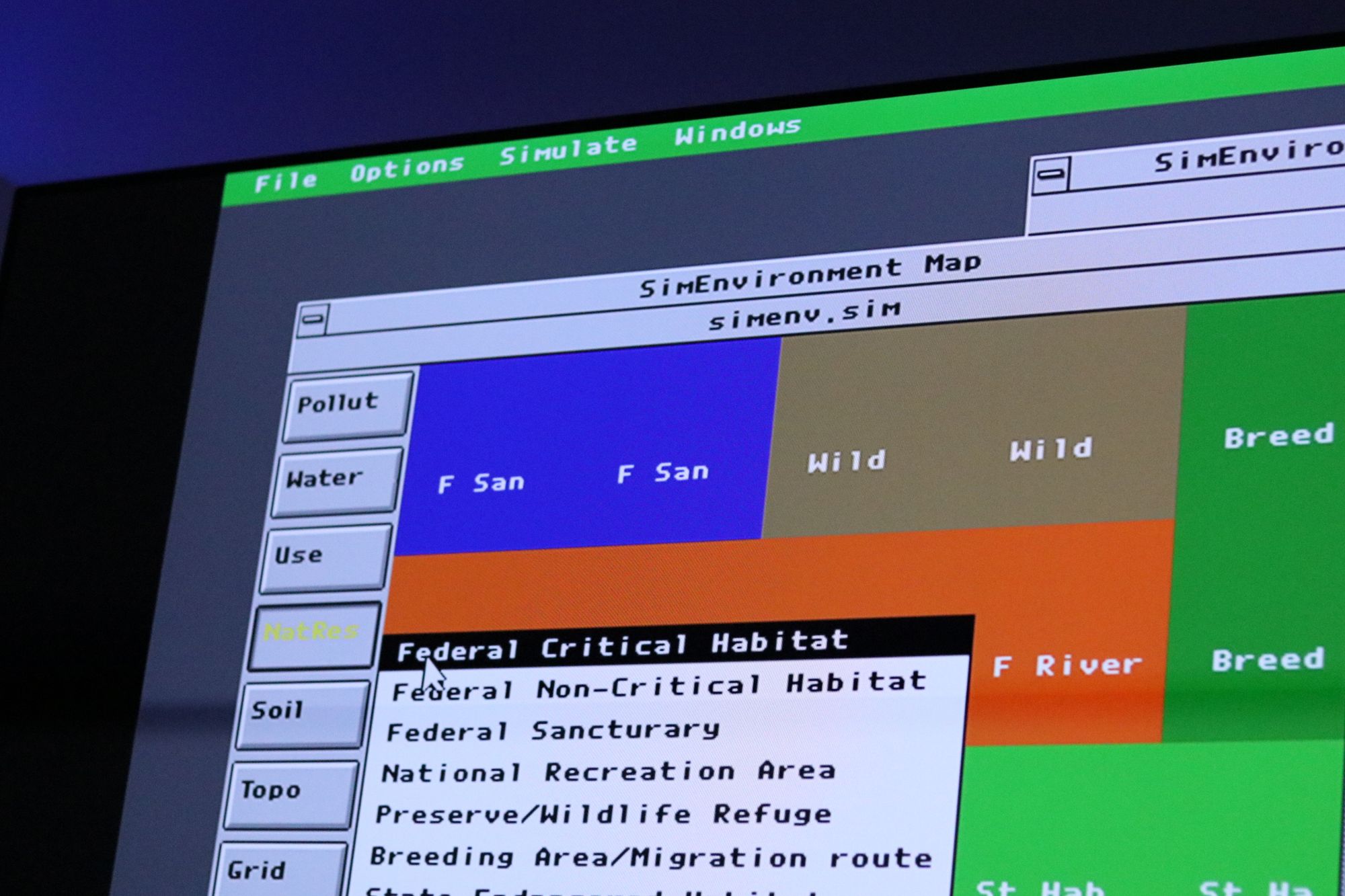
The National Priorities List, in turn, helps the agency determine which toxic sites are dangerous enough that they should be designated Superfund sites, which receive federal funding for environmental remediation. Any site scoring 28.5 or higher, the EPA said, is eligible for placement on the National Priorities List.
In SimEnvironmnet, toxic sites like landfills or smokestacks can be placed on a gridded, SimCity-style map. Players can alter soil conditions, the depth of the water table and bedrock, and the altitude of the land. They then run simulations to see how quickly and how far pollution spreads through the atmosphere, through groundwater, and across surface water—key contamination "pathways" in the HRS scoring system. Just as HRS scores consider how the land around a toxic site is used, SimEnvironment allows players to reshape the map to include sensitive environments like national recreation areas, as well as different land use types such as urban and rural land, farmland, and forests.
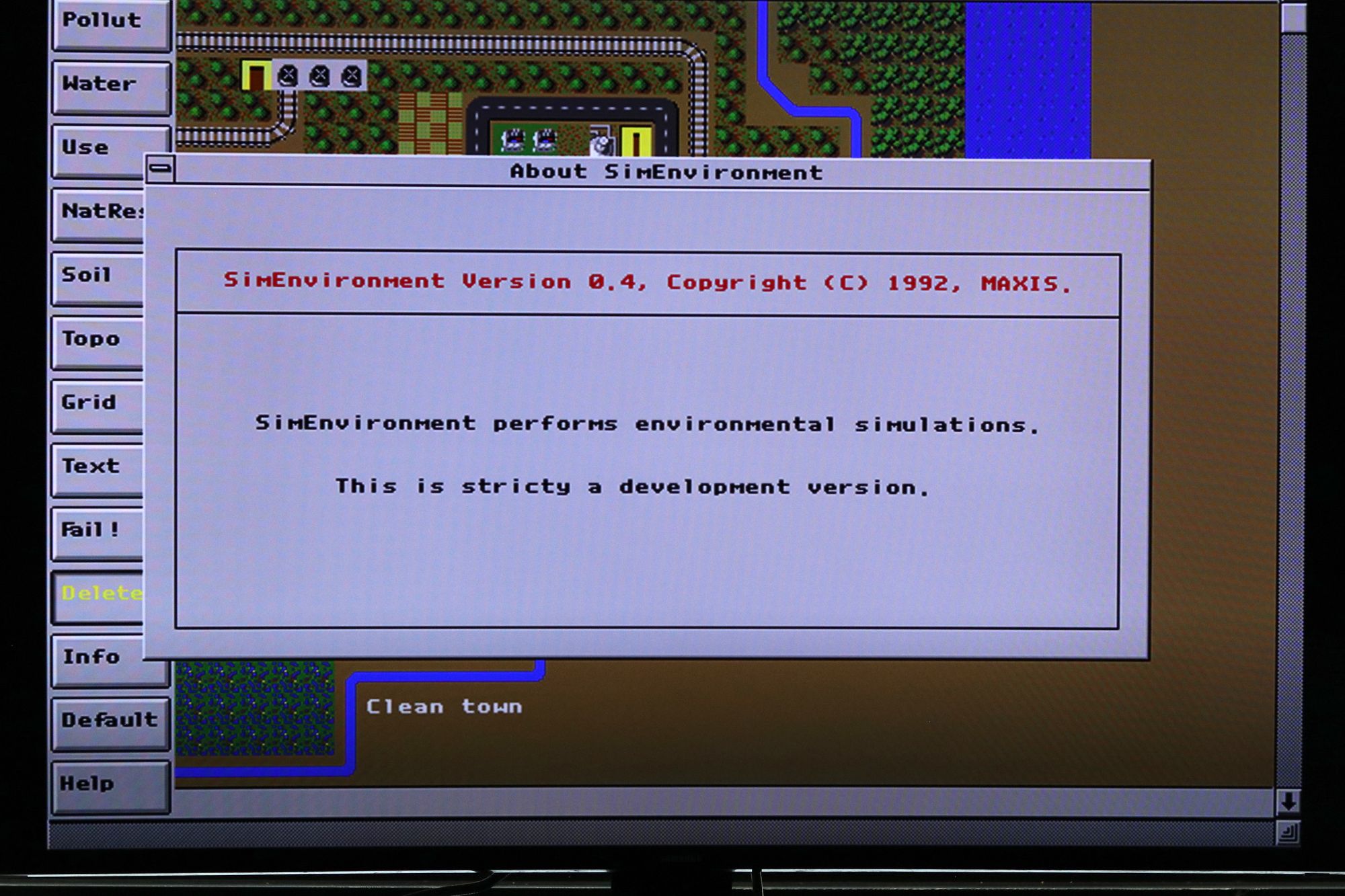
It seems that SimEnvironment's developers intended for the game to produce actual hazard "scores" in addition to visually simulating the spread of pollution. But this capability was never implemented. In fact, the Strong Museum's prototype copy of SimEnvironment has extremely limited functionality. The most complete part is a tutorial that shows players how to alter some of the settings and place polluting sites on the map. The tutorial then runs a "pollution simulation" in which blue pixels (water pollution?) and gray pixels (air pollution?) spread across the world. After the simulation ends, a "pollution impact" window pops up, showing the player the "dose" of pollution created by each source.
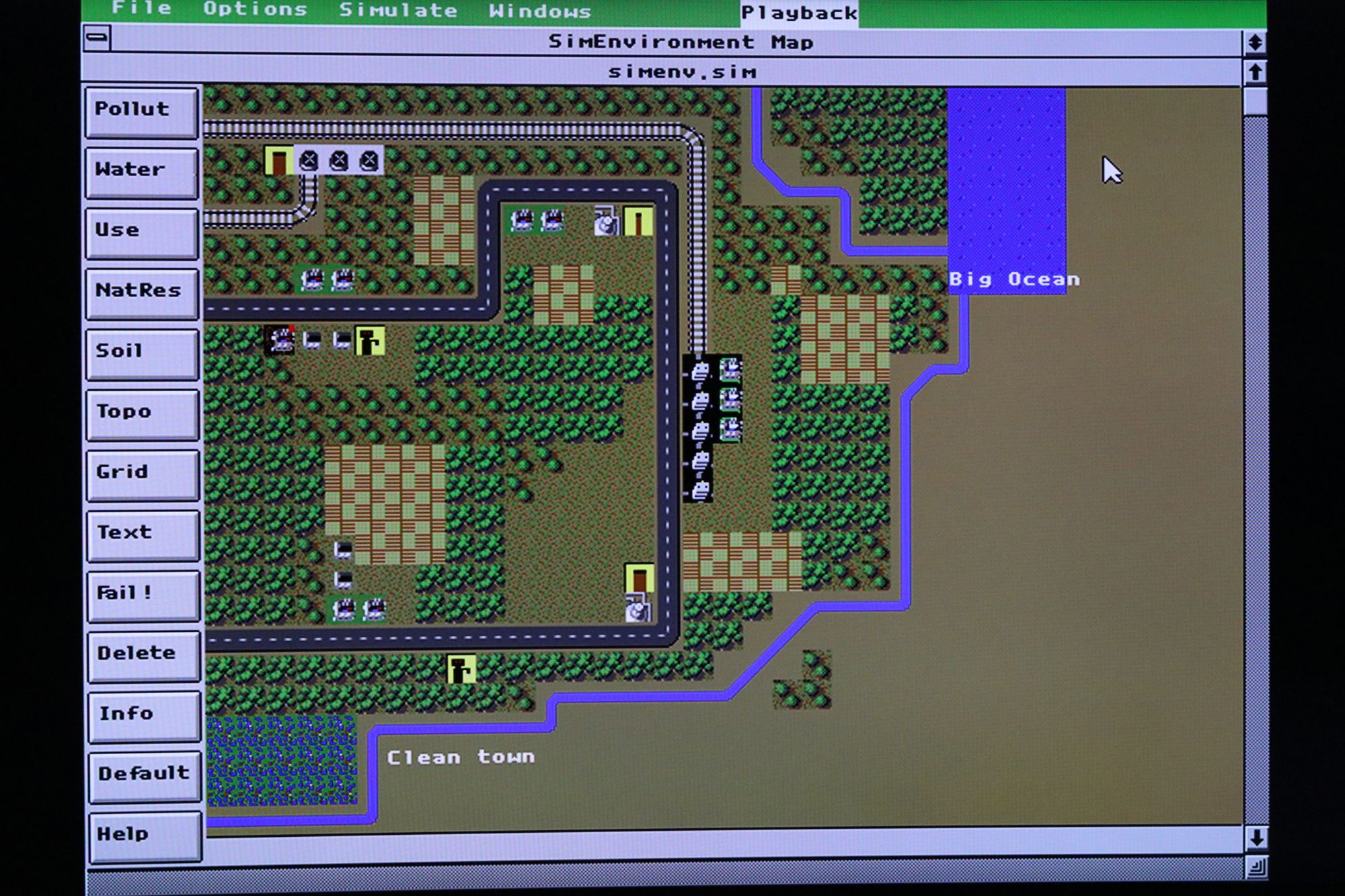

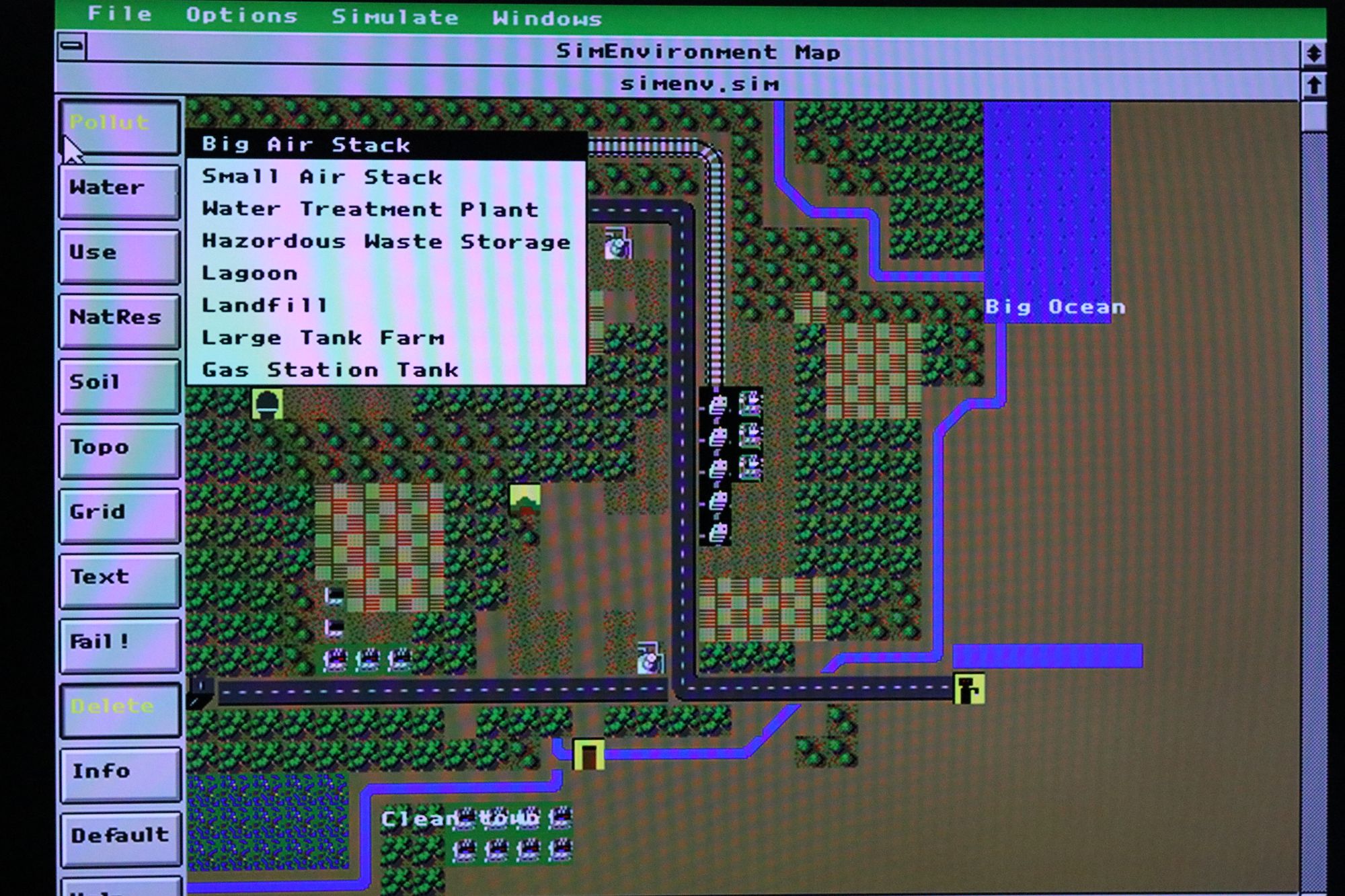
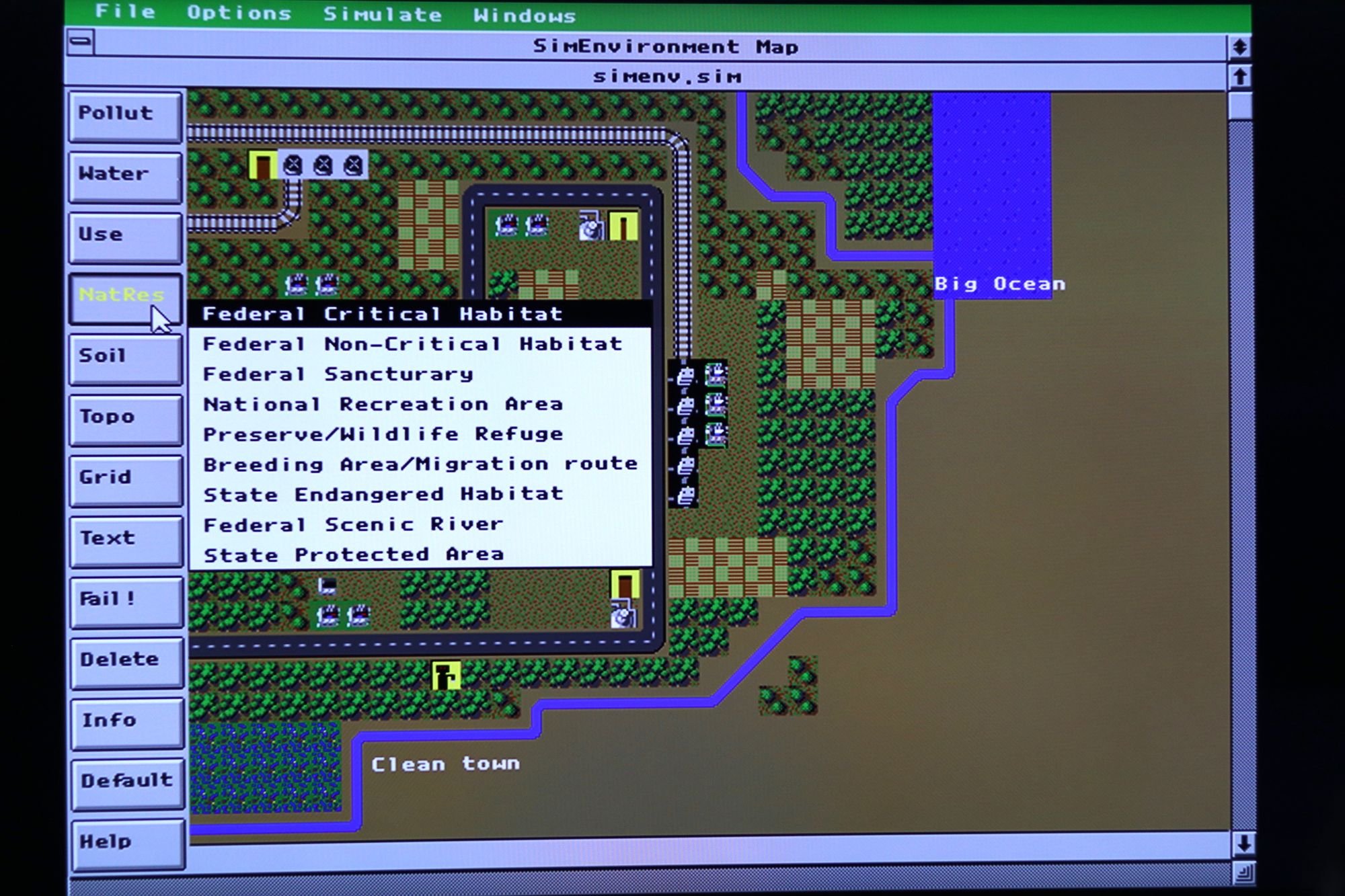
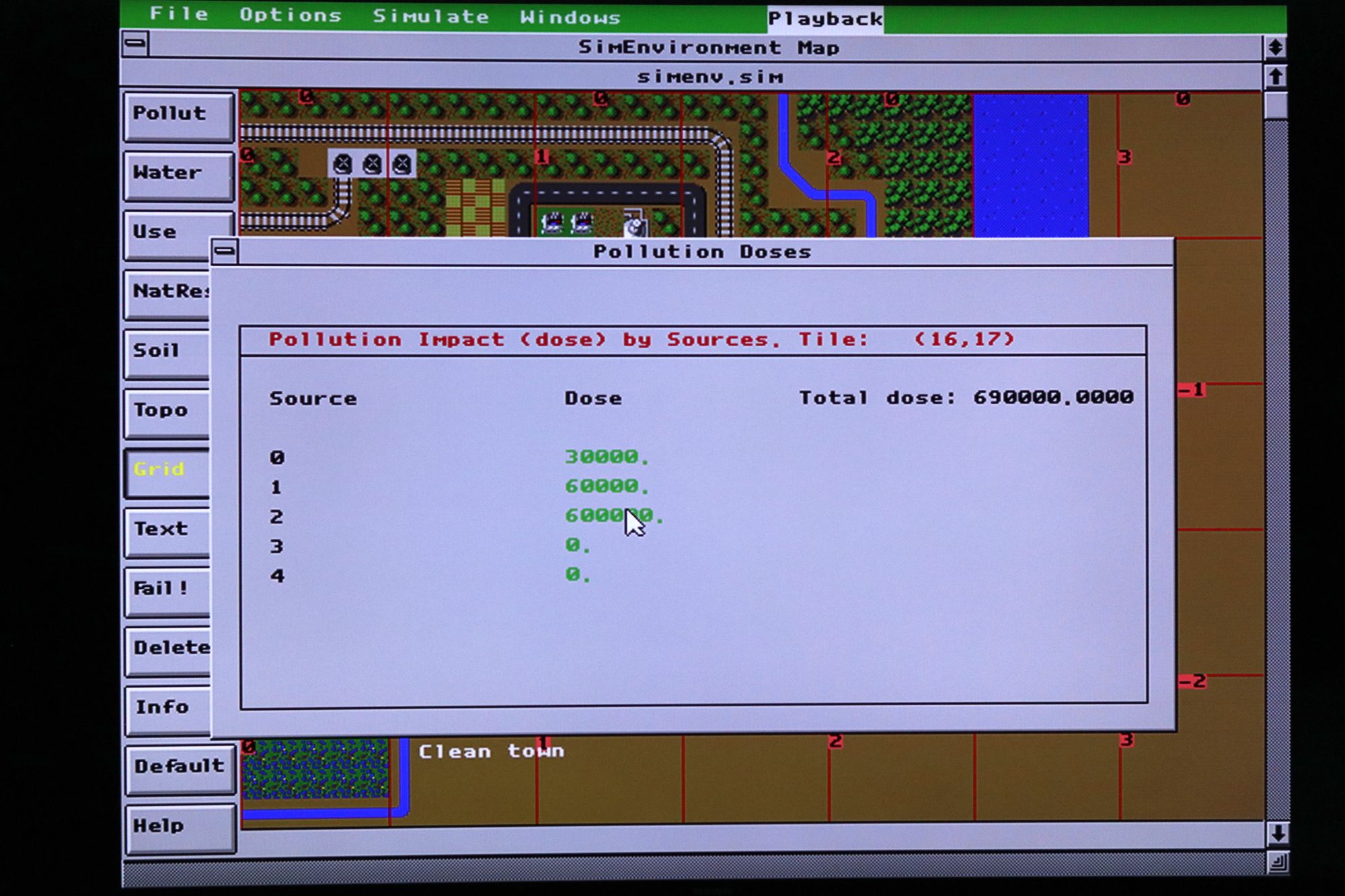
If this sounds incredibly dull compared with simulating a city, a planetary biosphere, or an ant colony, reader, you are not wrong. As someone who legitimately enjoys diving into EPA technical reports, even I had trouble mustering enthusiasm for what I saw in this tutorial. That speaks to the larger problem with Maxis's business division, according to Jeff Braun, the former CEO of Maxis.
"The quality that came out of there was, I would say, substandard," Braun said in an interview, adding that the division's one commercial release—a simulation of the US healthcare system called SimHealth—was "kinda lame."
"It didn't go quite where anyone hoped it would," Braun said. Braun had never even heard of SimEnvironment until I contacted him about it.
SimEnvironment was one of Maxis Business Simulations' earliest efforts. The version at the Strong Museum was copyrighted in 1992 according to the title screen, and the floppy disk has October 14, 1992, penciled on the front. The significance of the date is not entirely clear, however, it's a little over a week before SimRefinery's copyright was registered with the US copyright office. Touchstone, the former Chevron engineer, recalled in an email that Business Simulations division general manager John Hiles handed him a copy of SimEnvironment while they were working together, "probably as it was a parallel occupation of his."
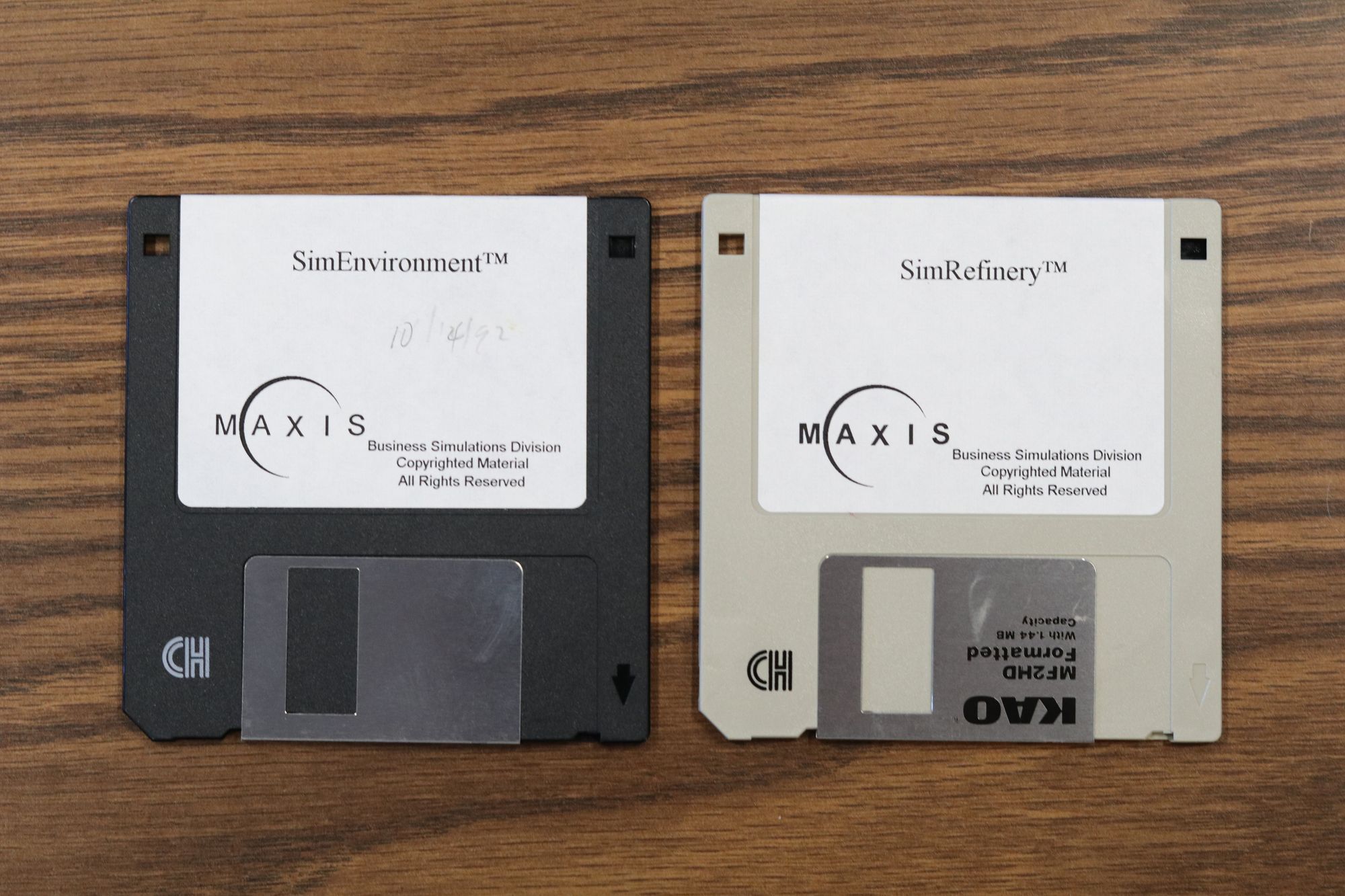
"That totally makes sense," Skidmore said when I told him that Touchstone received the game from Hiles. "SimEnvironment was a close follower. We built it on a lot of the underlying code we used in SimRefinery."
Much of that shared code comes from SimFarm, according to Salvador, the game historian.
"The Maxis Business Simulations team didn’t have a lot of experience designing graphical games," Salvador told me. "They had experience doing this sort of hardcore simulation software. So when the time for SimRefinery and SimEnvironment came around, Maxis, from what I understand, gave them the code base for SimFarm, which was in production at the time."
But while SimFarm was released in 1993, SimEnvironment doesn't seem like it was ever completed. Tutorial aside, the simulation is basically a mock-up, with buttons and menu bars hinting at functions that were never realized. What does it mean to simulate "disaster planning" or "capital facility planning"? What chemicals or "containment methods" were supposed to be present in an editable database? Clearly, someone with expertise in environmental threats thought these concepts were important enough to include them in the menu bars. But without knowing who that someone was or finding a more complete copy of SimEnvironment, we may never truly understand the vision for this game.
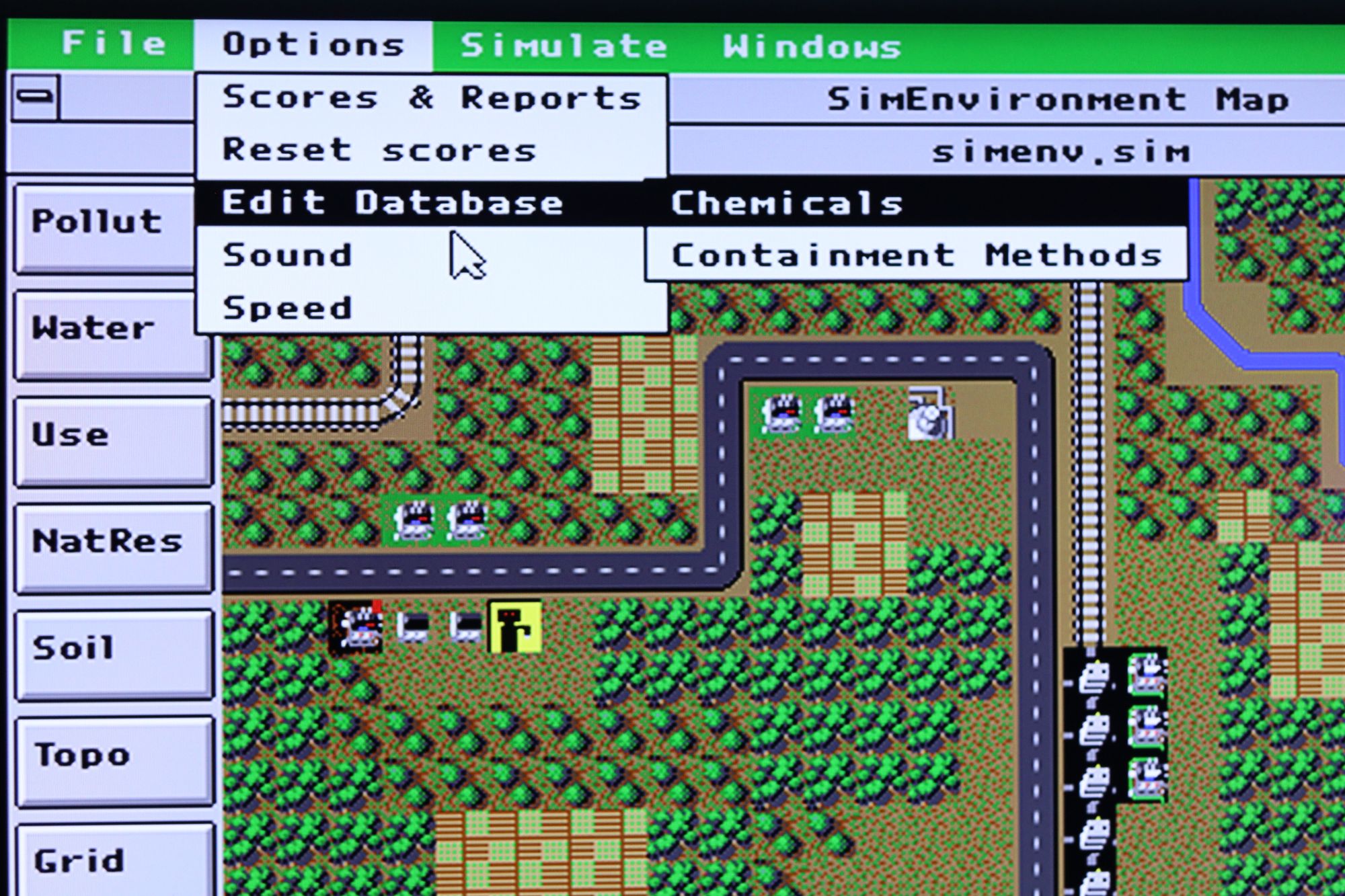
"To the best of our knowledge, the SimEnvironment game related to HRS scoring was developed by an individual contractor who had experience developing the HRS," the EPA told me. If you, reader, know who that person might be, please pass along this article and urge them to reach out to me.
As it stands, SimEnvironment is an intriguing bit of Maxis history that feels newly relevant at a time when more and more games feature environmental storylines, from eco-terrorism in Final Fantasy VII Remake to renewable energy in Animal Crossing. A "game" based on the EPA's Superfund ranking system may have been too niche to ever take off. But using games as a teaching tool to reveal the complex ways humans impact the planet remains a great idea.
If Maxis wants to take a break from The Sims franchise to finish what they started with SimEnvironment, I'm here for it.
